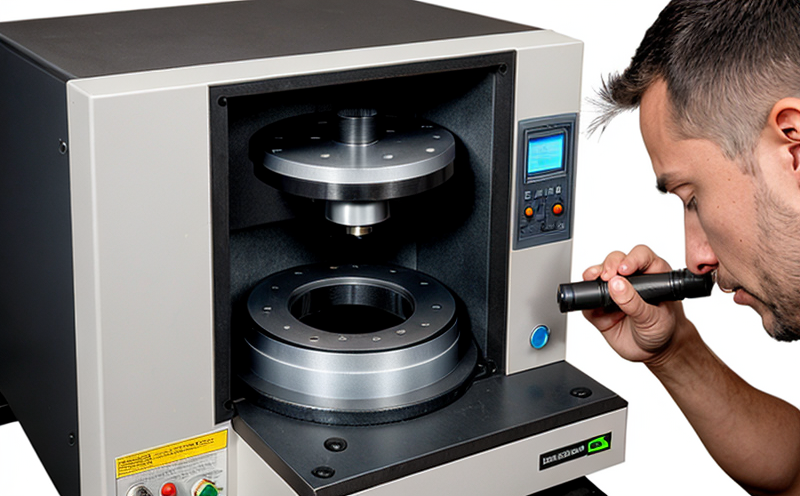ISO 9044 Volume Fraction Determination of Phases by Metallography
The determination of volume fraction of phases is a critical aspect in additive manufacturing and 3D printing testing. This process ensures that the material's microstructure aligns with design specifications, thereby enhancing reliability and performance. According to ISO 9044, this method involves the detailed analysis of metallographic sections using optical or electron microscopy techniques.
The first step in this process is selecting an appropriate specimen for examination. The specimen should be carefully prepared by polishing and etching to reveal the microstructure clearly. Etchants like nital (nitric acid + ethanol) are commonly used to highlight grain boundaries and phase interfaces effectively.
Once the preparation is complete, sections are observed under a microscope equipped with appropriate objectives and illumination settings for optimal visualization of phases. The operator must then carefully count the number of grains or areas covered by each phase within a predefined field of view. This manual counting method requires precision and experience to ensure accurate results.
For more complex samples, automated image analysis software can be employed to assist in determining volume fractions. These tools use algorithms based on thresholding techniques and morphological operations to segment different phases accurately. However, human interpretation remains crucial for validating automated findings.
The accuracy of the measurement depends heavily on the quality of specimen preparation. Poor surface finish or insufficient etching can lead to misleading results. Therefore, strict adherence to standard procedures is essential throughout the entire process.
Once all necessary measurements are completed, they must be reported according to ISO 9044 guidelines. The report should include details about the type of material being tested, the specific phases identified, their respective volume fractions, and any other relevant observations made during examination.
This test plays a vital role in ensuring product quality across various industries where precise control over microstructure is essential for optimal performance. For instance, aerospace manufacturers rely on accurate phase fraction analysis to ensure safe operation of critical components like turbine blades or engine casings.
- Ensures compliance with international standards
- Aids in improving manufacturing processes through continuous monitoring
- Supports development of new materials and alloys tailored specifically for demanding applications
- Facilitates troubleshooting when issues arise during production or usage
In summary, the determination of volume fraction of phases by metallography is an indispensable tool in additive manufacturing and 3D printing testing. By providing precise data on microstructure composition, this method helps maintain high-quality standards essential for reliable product performance.
Why It Matters
The importance of accurate volume fraction determination cannot be overstated as it directly impacts the mechanical properties and overall quality of manufactured parts. Inadequate knowledge about phase distribution can result in substandard products that fail to meet required specifications or even cause failures under stress conditions.
For instance, in aerospace applications, improper control over phase fractions could lead to premature fatigue cracking or reduced service life due to poor strength-to-weight ratio design. Automotive manufacturers also benefit significantly from this testing because it allows them to optimize fuel efficiency by balancing weight reduction with necessary structural integrity requirements.
Beyond mere compliance checks, understanding the microstructural features enables continuous improvement efforts aimed at enhancing product quality and durability. This insight guides improvements in process controls, raw material selection, and design optimization initiatives.
Moreover, this testing supports research and development activities by providing valuable input into ongoing projects focused on developing advanced materials with enhanced performance characteristics. Such innovation is crucial for maintaining competitive edge within global markets characterized by rapid technological advancements and stringent regulatory environments.
Why Choose This Test
Selecting the right testing method depends largely on your specific needs and objectives. However, if you require detailed information about phase distribution within metallic materials, ISO 9044 volume fraction determination by metallography offers unparalleled accuracy and reliability.
The primary advantage lies in its ability to provide precise measurements of individual phases present in the material. This level of detail is particularly useful when dealing with complex alloys where multiple phases coexist. It allows for detailed analysis that can uncover subtle variations that might otherwise go unnoticed.
Additionally, this testing approach ensures consistency across different batches or versions of a product by providing repeatable results every time. The standardized procedures outlined in ISO 9044 guarantee uniformity and accuracy, making it ideal for quality assurance purposes.
Finding labs capable of performing such tests efficiently is another consideration. With our extensive experience and advanced equipment, we offer reliable services tailored specifically to meet your demands. Our team consists of highly skilled professionals who possess the expertise needed to deliver accurate results promptly.





